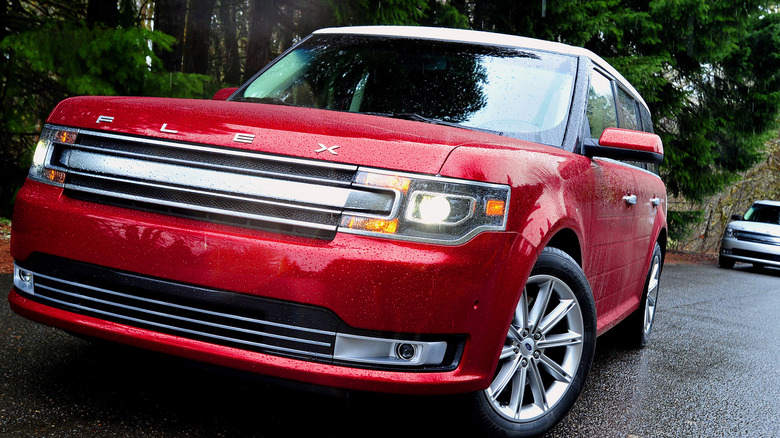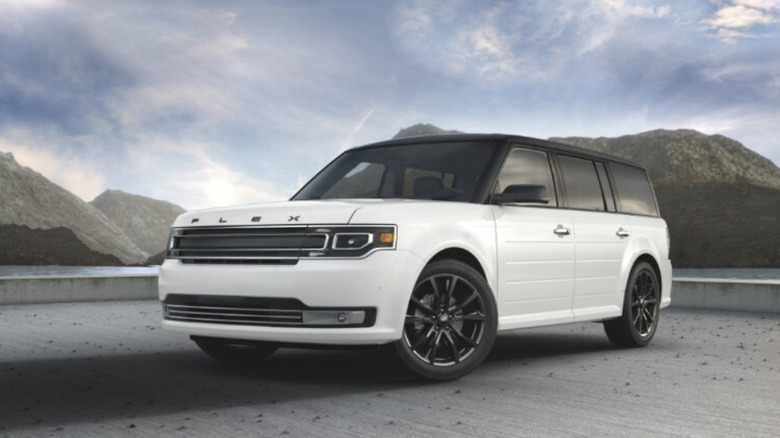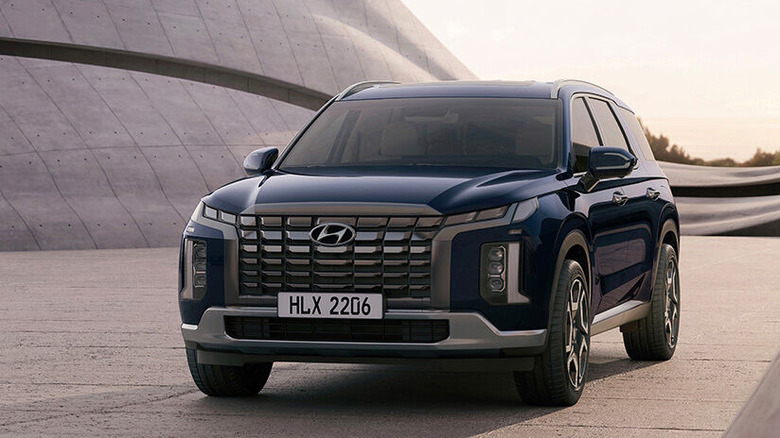Why Did Ford Discontinue The Flex?
From 2000 until 2018 a new category of car called "crossover" – a cross between your average car and an SUV – grew to take up 40% of the automobile market. This category became highly popular amongst consumers because of its notable blend of utility and versatility but at a lower price point than SUVs. Like many companies, Ford decided to capitalize on this increasingly popular style and, in 2008, launched the Ford Flex — an update to the 2005 Fairlane concept. With its distinguished boxy silhouette and spacious three-row seating capable of accommodating a max of seven passengers, this particular crossover was meant to rejuvenate the classic station wagon with a retro twist.
Originally marketed for families due to its strong safety measures, other audiences were drawn quickly to the Flex's utilitarian appeal and versatility. The Flex's engine options and efficiency in particular was an especially attractive staple throughout its tenure on the market — something SlashGear highlighted in the 2017 Ford Flex twin-turbo EcoBoost review.
Yet despite these unique attributes, Ford has decided to discontinue the Flex just over a decade after its release, with the 2019 Flex to be the final version released on the market. A culmination of important factors such as low sales, quality control issues, and increased competition from other brands all played a significant role leading up to the Flex's untimely end.
Low sales and poor quality control issues
Since its launch, the Ford Flex has unfortunately been dogged by poor sales numbers. Over the course of its run, the number of Flex units sold annually declined from a peak of 38,000 in 2009 to roughly 20,000 by 2018. By comparison, the Ford Explorer, one of the company's more notable flagship models, sold a total of 227,732 units by the end of 2018. These floundering sales were further compounded when the effects of the COVID-19 pandemic swept through the automotive industry – as witnessed with the discontinuation of the Ford EcoSport. Interesting to note that the Flex did garner popularity among a contingent of West Coast consumers, especially in California, where the boxy wagon accounted for one-fifth of the automaker's states sales by 2011.
One major reason for these lows sales numbers is that Ford lacked a clear marketing strategy for the model. The car was designed specifically as a reliable family vehicle, and yet ad campaigns the automaker aired pitched the Flex as some kind of next-level clubbing cruiser. Even the name itself, "Flex," doesn't leave a clear brand image in the consumer's mind as it tries to capture all of the SUV, minivan, and station wagon crossover elements. Additionally, Ford also had to contend with a series of company-wide quality control issues. The most notable of incidents happened in 2015 when Ford recalled 423,000 older cars for electric steering issues, which included the 2011-2013 Ford Flex.
Increasing industry crossover competition
As the popularity of crossovers with consumers has increased over the years, so too has the competition between automakers. A number of international contenders have released their own sleek iterations of the SUV-crossover, including the Volkswagen Atlas, Hyundai Palisade, and Kia Telluride. Given these recent upgrades, Ford stated that it made the decision to discontinue the Flex due to its "plan to strengthen its focus on products in the heart of the fastest-growing segments."
In the wake of the Flex's termination in 2019, Ford redirected its resources toward producing new crossover contenders, including the revival of the Bronco and the electric-infused Mustang Mach-E. Both of these models come ready-made with high caliber reputations and decades worth of built-in brand recognition that the Flex was never quite able to attain. Additionally, after its discontinuation Ford proceeded to layoff 450 workers at its Oakville Assembly Plant in Ontario, Canada, the factory primarily responsibly for manufacturing all Flex models in North America.
This cost-cutting measure was another step towards Ford's overarching goal at the time to redesign or replace 75% of its vehicles on the market. Other models that met the chopping block along with the Flex included the Focus, Fusion, Fiesta, Taurus, and most recently the Edge. While the Ford Flex may not have had the longevity to withstand the growing industry-wide competition, it did succeed at achieving a good run as the bold, boxy pioneer of crossover cars.


